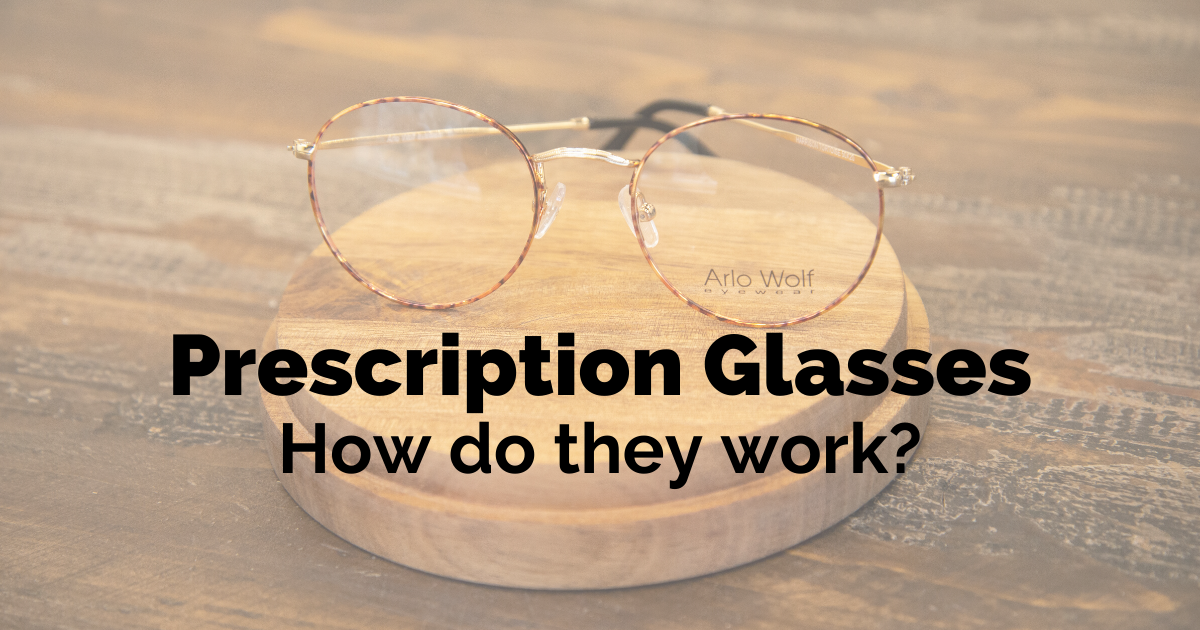How do prescription glasses work?

How do prescription glasses work?
Did you know? The first eyeglasses were made in Northern Italy (thought to be in Pisa) around 1290. That’s over 700 years ago! Since then, our eyeglasses and prescriptions have come a long way. What was once seen as a medical applicate eventually became a must-have fashion accessory in the 1970s.
Despite this long history, not many of us know how prescription glasses actually work – but we’re going to solve that once and for all. Glasses at the ready…
The simple science behind how we see things
Light first passes through your cornea which can be described as the window to your eye. This light then passes through the pupil into your eye. Have you ever noticed your pupil changes size depending on the light you are exposed to? The amount of light that enters our eye is controlled by the muscles in the iris, which are known to contract and relax to adjust the size of your pupil.
Eventually, said light travels down your optic nerve where the light can then be translated into an image.
For those who are lucky enough to have perfect 20/20 vision, any light rays focus perfectly on their retina allowing this perfect vision. However, those of us without perfect vision can use lenses to change the direction of the light so that we can see more clearly.
How prescription glasses help with common vision problems
If you have any of these vision problems, you’ll likely need prescription eyeglasses to correct your eyesight.
Myopia (also known as nearsightedness)
Myopia is caused when the shape of your eye causes light rays to bend incorrectly, which then focuses the light in front of your retina instead of on it. This can cause faraway objects to appear blurry. Like our prescription glasses here at Arlo Wolf, a concave/minus lens is used to bend the light to correct nearsightedness
Hyperopia (also known as farsightedness)
Farsightedness means close up objects are out of focus, such as when you’re reading a book or your phone. This happens because the image doesn’t focus before it reaches the retina. In this case, a convex/plus lens is used to correct the vision.
Astigmatism
If you’ve been told you have astigmatism, this means your eye has trouble with processing light and this is often caused by an irregularly shaped cornea. Astigmatism usually occurs with myopia or hyperopia. In this case, a cylindrical lens can be used to focus the light into a line so you can see more clearly.
Understanding your glasses prescription
Are you confused by the numbers and letters on your glasses prescription? You’re not alone. From the sphere to the cylinder, axis to the prism, these terms mean very little to the general public. In fact, we get a lot of enquiries about what they actually mean, which is why we put together a blog post on understanding your prescription. So the next time you get your eyes tested, you’ll know exactly what has changed.
Finding the perfect glasses for you
Now that you know what your prescription means, and you know the science behind prescription glasses, why not bag yourself a pair of prescription glasses to try on at home? Pick 4 pairs and we’ll send them straight to your door for you to try on for style.
With our range of women’s glasses and men’s optical glasses, you’ll find plenty of styles and shapes to choose from. Once you’ve found the perfect pair, send them back and we’ll start preparing your prescription lenses with your chosen frames.
Don’t forget to check out our face shapes guide to find out which glasses suit the shape of your face the most.

 How to beat screen fatigue and care for your eyes
How to beat screen fatigue and care for your eyes The benefits of blue light glasses
The benefits of blue light glasses What are the UK standards of vision for driving?
What are the UK standards of vision for driving? What are the best glasses for computer use?
What are the best glasses for computer use?